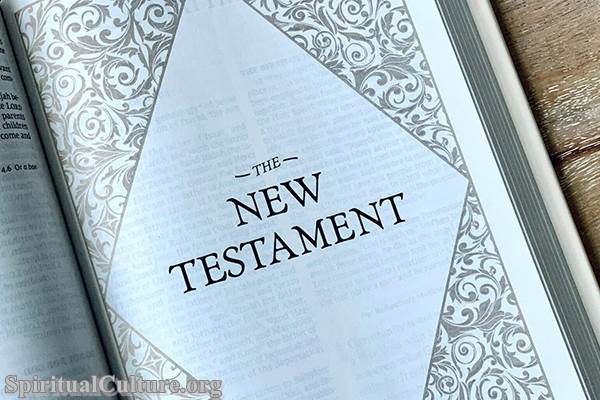In every heart lies a deep yearning: to hear a voice that transcends time, a voice that calls us beyond the noise of the world into a sacred encounter. The Bible stands at the center of this longing. It is more than an ancient text; it is a living witness to humanity’s thirst for God, a library of faith stories, poems, and teachings woven together across centuries.
As “Spiritual Culture,” we invite you into the mystery of how this beloved text came to be. How were its books chosen? What does “inspiration” truly mean? Why do these questions matter for our spiritual lives today? In this article, we will unfold the rich tapestry of the Bible’s formation, looking beyond historical events to the spiritual heartbeat that pulses beneath each page.
The Meaning of “Canon”: Measuring the Sacred
Canon as a Spiritual Standard
The word “canon” comes from the Greek kanōn, meaning “measuring rod” or “rule.” In the context of the Bible, it refers to the collection of writings recognized as divinely inspired and authoritative. The canon is not merely a list but a spiritual standard — a guide that shapes faith and practice.
Early Christian Context
In the first centuries after Christ, believers read and circulated many writings: gospels, letters, apocalypses, and sermons. Some communities cherished certain texts deeply, while others did not know them at all. There was no single agreed-upon New Testament canon at first.
The process of forming a canon was not about imposing control but about discerning which writings truly carried the living voice of Christ.
Apostolic Origin and Teaching
A primary criterion for inclusion was apostolicity — a text had to be connected to the apostles or their close companions. This principle ensured continuity with the first witnesses of Jesus’ life and resurrection.
Liturgical Use and Universal Acceptance
Books used widely in worship (liturgically) across different Christian communities carried more weight. Over time, through prayerful discussions and shared spiritual experience, these texts gained universal recognition.
The Inspiration of Scripture: God’s Breath in Human Words
What Does Inspiration Mean?
When we speak of the Bible as “inspired,” we echo 2 Timothy 3:16: “All Scripture is God-breathed and useful for teaching, rebuking, correcting and training in righteousness.” The term “God-breathed” (Greek: theopneustos) conveys an intimate image of God breathing life into the words, similar to how God breathed life into Adam.
Human Authors, Divine Message
The Bible did not fall from heaven as a finished manuscript. Instead, it was written by human beings with diverse personalities, cultural backgrounds, and literary styles. Yet, each writer was mysteriously guided by the Spirit to convey divine truths.
The Psalms: A Personal Example
Consider the Psalms — songs of joy and sorrow, lament and praise. David cries out, “My God, my God, why have you forsaken me?” (Psalm 22:1). In this raw human cry, we glimpse divine intimacy. Inspiration does not erase human emotion but transforms it into prayer and revelation.
The Formation of the Old Testament
From Oral Tradition to Sacred Text
Long before being written, many stories of the Old Testament were preserved orally — songs, genealogies, laws, and epic narratives passed from generation to generation around fires and in family gatherings.
The Hebrew Scriptures (Tanakh)
The Hebrew Bible, or Tanakh, comprises three parts:
- Torah (Law): The foundational teachings, including Genesis, Exodus, Leviticus, Numbers, and Deuteronomy.
- Nevi’im (Prophets): Historical and prophetic books such as Joshua, Isaiah, and Jeremiah.
- Ketuvim (Writings): A diverse collection including Psalms, Proverbs, and Job.
Canonization Process
By the time of Jesus, most Jewish communities accepted a core set of these writings, though debates persisted about certain books (e.g., Esther, Ecclesiastes).
Jesus affirmed their authority, saying, “Everything must be fulfilled that is written about me in the Law of Moses, the Prophets, and the Psalms” (Luke 24:44).
The Septuagint: A Bridge to the Early Church
Greek Translation and Wider Reach
Around the 3rd century BCE, Jewish scholars in Alexandria translated Hebrew scriptures into Greek, creating the Septuagint (LXX). This became crucial for diaspora Jews and the early Christians, who often spoke Greek.
Usage in the New Testament
Many New Testament quotations come directly from the Septuagint, indicating its significance. Books like Wisdom of Solomon and Tobit, included in this collection, were embraced by early Christians, though later debated in the West.
The New Testament: Witnessing to Christ
The Four Gospels
The Gospels of Matthew, Mark, Luke, and John each provide unique perspectives on Jesus’ life and mission. They were accepted early because they faithfully conveyed the apostolic witness and the living memory of Christ.
Mark: The Earliest Gospel
Mark’s Gospel is often considered the earliest, emphasizing Jesus as the suffering servant. It is concise and urgent, calling readers to immediate discipleship.
John: The Mystical Gospel
John’s Gospel offers a more reflective, theological approach, focusing on Jesus as the eternal Word (“In the beginning was the Word…”) — an invitation to see Jesus as the divine presence incarnate.
Paul’s Letters and Beyond
Paul’s epistles addressed real challenges in early Christian communities, offering guidance, correction, and encouragement. Letters from other apostles, like Peter and John, broadened the church’s theological landscape.
Revelation: The Prophetic Vision
The Book of Revelation, though controversial, offered hope to persecuted Christians, presenting a cosmic vision of Christ’s ultimate victory.
Criteria for Recognizing the New Testament Canon
Apostolic Connection
Texts had to originate from or be closely linked to the apostles.
Orthodoxy
The writings needed to align with the “rule of faith,” the core truths passed down in the early church’s teaching.
Catholicity (Universality)
A book needed to be widely accepted across different churches and regions.
Liturgical Use
If a text was regularly read in worship, it signaled its spiritual authority and transformative power.
Differences Across Christian Traditions
The Catholic and Orthodox Canons
Catholic and Orthodox Christians include additional books (Deuterocanonical) such as Tobit, Judith, and Wisdom of Solomon. While Protestants later excluded these, these writings continue to inspire and nurture spiritual life in many traditions.
Embracing Diversity
These differences remind us that Christianity is a living, global family. Unity does not mean uniformity; rather, it invites us to listen with humility to how the Spirit moves across cultures and histories.
The Bible: Not Just a Book, but a Living Word
Living and Active
Hebrews 4:12 proclaims: “For the word of God is alive and active. Sharper than any double-edged sword…” The Bible confronts, comforts, and transforms. It is not a museum artifact but a living dialogue between God and humanity.
A Mirror and a Lamp
Psalm 119:105 describes Scripture as “a lamp for my feet, a light on my path.” As we read, we see ourselves more clearly and discern the steps ahead.
The Bible and Spiritual Formation
Reading as Encounter
St. Augustine beautifully called the Scriptures “letters from home.” Reading them is an act of returning — to God, to our true selves, to the divine story that holds us.
Community Discernment
Scripture was always read and interpreted within community. Together, believers listen for the Spirit’s voice, correct misunderstandings, and encourage each other to live out the message.
The Desert Fathers
Early Christian monks, known as the Desert Fathers and Mothers, would memorize vast portions of Scripture. For them, Scripture was not just to be studied but to be woven into the heart, transforming every thought and desire.
Scripture and the Modern Believer
Navigating Doubts
Many today approach the Bible with skepticism or struggle with difficult passages. These struggles can become holy invitations — not to discard the text but to wrestle, as Jacob wrestled with God, and emerge transformed.
Deepening Faith
Through regular reading and meditation, the Bible becomes a companion in joy and sorrow, success and failure, clarity and confusion. It does not provide a map for every detail but offers a compass that always points us toward love.
Reflect and Reimagine
The formation of the Bible — through divine inspiration and careful discernment — is a profound story of God’s desire to speak with humanity. It is not merely about ancient councils or dusty scrolls; it is about a God who longs to be known, who bends close enough to breathe into human words.
When you open your Bible, you step into a centuries-long conversation between God and people. Each chapter holds echoes of countless prayers, tears, questions, and songs.
May you read with curiosity and courage. May each verse become a doorway to encounter the living Christ. May this sacred text not only inform your mind but transform your heart, awakening you to the endless love that holds all things together.




